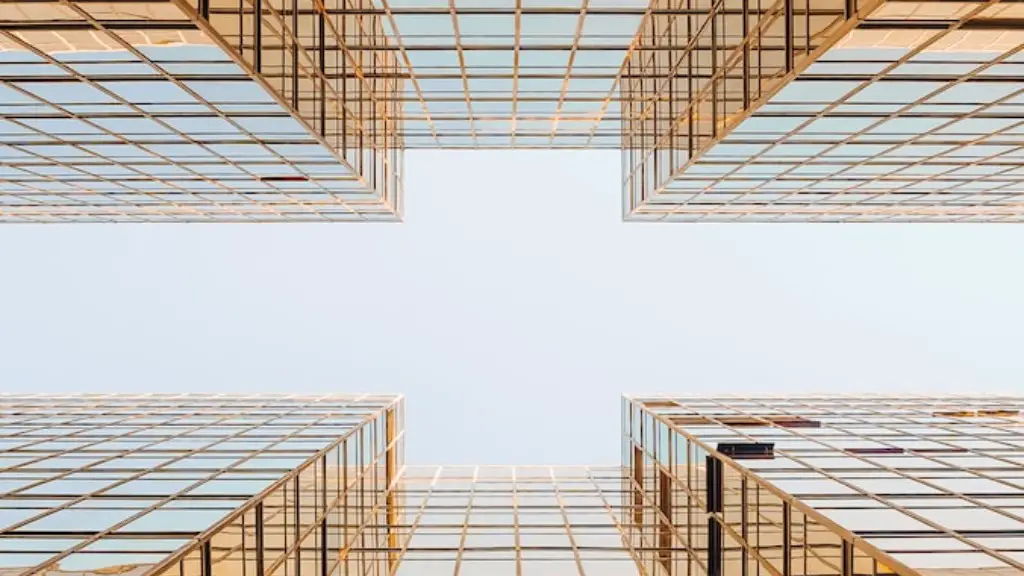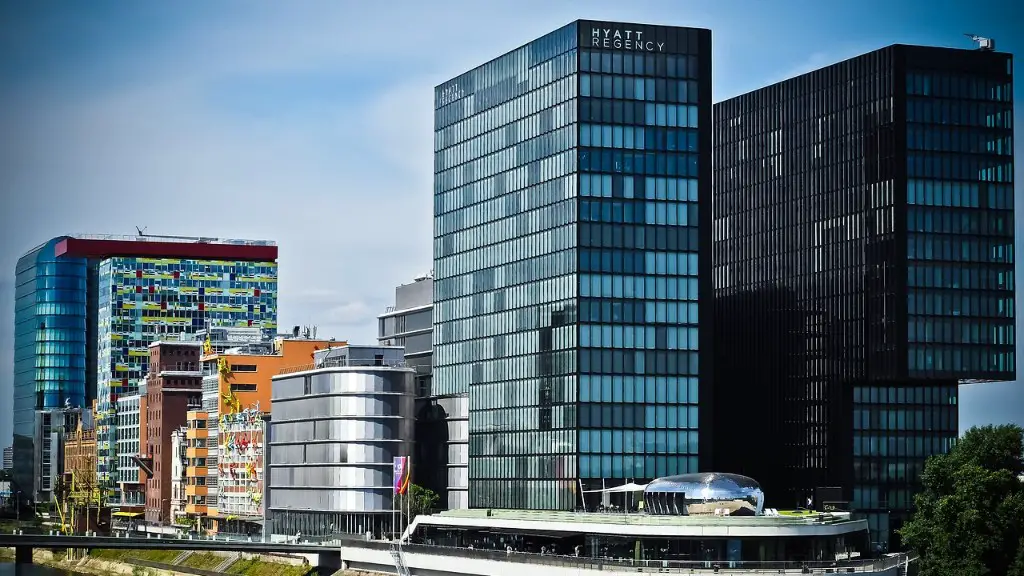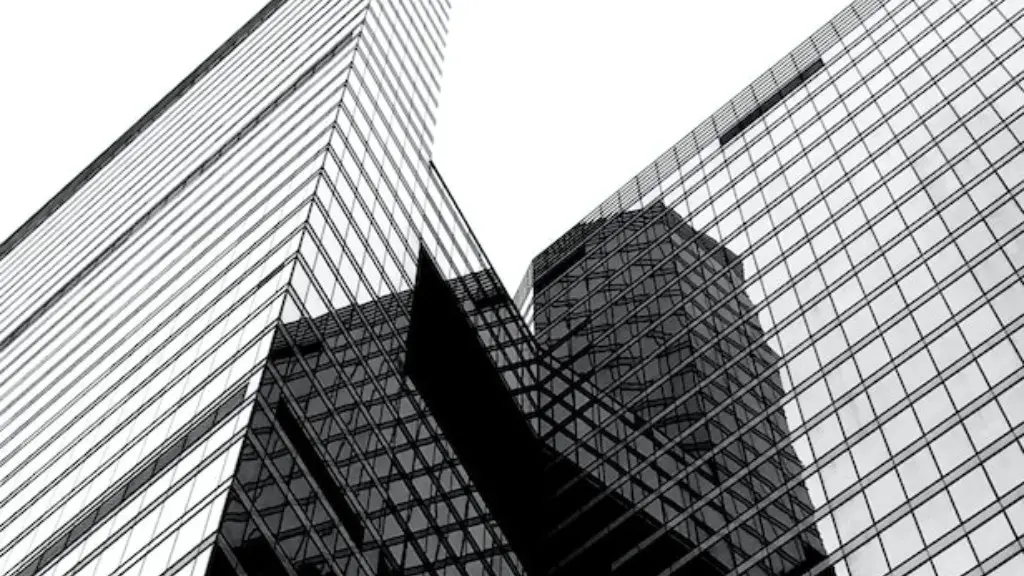Good architecture is an incredibly important concept in society. It shapes our landscape, impacts our economy, and affects our daily lives in many ways. It is essential that when designing buildings and public spaces we take into account relevant factors such as sustainability, safety, cost, and aesthetics. This article will explain why good architecture is important, the benefits that it can bring, and how we can go about creating amazing designs.
Firstly, good architecture can have a positive influence on our economy. Buildings that have been well designed need less maintenance and have longer lifespans. This means less money is spent on repairs and updates, reducing costs over time. Good architecture can also attract more people to the area, creating opportunities for businesses and giving a much needed boost to local economies. A well-planned neighbourhood can also lead to improved infrastructure, helping make everyday activities more efficient.
The second reason why good architecture is important is because of its impact on people’s lives. When buildings and public spaces are thoughtfully designed, it can improve quality of life and make the surrounding environment more enjoyable. Daylight and airflow are two important aspects of architecture that can impact health and wellbeing, providing natural lighting and energy savings. Natural materials and energy efficient systems can also be incorporated into designs, making buildings sustainable and reducing their impact on the environment.
Thirdly, good architecture can provide a sense of identity and pride to a particular area. As buildings are physical representations of the culture, history and values of a given place, designing something that captures these attributes can have a positive impact on people’s lives. For example, a building steeped in history can create a sense of nostalgia, while an innovative design can show the ambition and spirit of a community.
Finally, good architecture is important because it helps promote creativity and innovation. Having buildings that inspire and challenge the way people think encourages exploration and allows us to expand our understanding of design and society.
Sustainability and Architectural Design
Sustainability is a key factor to be considered when designing buildings, with energy efficient systems being essential to achieving a healthy environment. There are many ways in which architects can plan for sustainable developments, from the incorporation of renewable energy sources, to the use of recycled materials in the building process. Ventilation and insulation are important considerations too, as these elements of design can help to reduce energy consumption in the long term.
Using renewable materials in the building process is also a great way to reduce the environmental impact of architecture. Materials like bamboo, straw, hemp and recycled plastic are increasingly popular, as they are both lightweight and durable. Natural materials like these can help to reduce the overall carbon footprint of a building, while also creating beautiful and varied designs.
The location, form and orientation of a building are all important elements of sustainable design. Architects should aim to maximise daylight and airflow where possible, as these elements can help to reduce energy consumption. Orientating a building so that it faces the sun is also a great way to reduce the need for lighting and cooling, as well as providing natural light throughout the day.
Aesthetics and Architectural Design
Aesthetics is a big factor when it comes to designing buildings, as it helps create a sense of identity and pride. Architects should consider the history and culture of the area they are working in, and use this as a starting point for their designs. By incorporating elements of the culture, such as traditional materials or local art, buildings can become symbols of the community and improve the visual appeal of the area.
The form, size and shape of a building can also have a major impact on the aesthetics. For example, curved lines and organic shapes often create a more dynamic and interesting appearance, compared to straight lines and rectangular forms. Different shapes can also allow for more intentional use of space, making the most of any views or natural resources.
Colour is an important element of design too, as it can be used to stand out from the surroundings and create interesting patterns. Using vibrant shades of colour can make a building look inviting and cheerful, while using more muted tones can create a sense of serenity and tranquillity. It is important to ensure the colour used is in keeping with the environment, as this will help a building blend in with its surroundings.
How We Can Create Good Architecture
Creating good architecture is not an easy task, however there are some steps that can be taken to ensure a design is reflective of the environment and enjoyable to use. The most important thing to consider is the needs of the people who will use the building, as this will ensure that it meets the requirements of the community.
A great starting point when creating designs is to understand the surrounding environment. Studying the layout of the land, the climate, and the materials available can all help to inform how a building will look and feel. It is also important to review the history of the area, as this can help us to create something that has meaning and relevance to the people who live there.
Engaging with the community is also essential in creating good architecture. Working with experts, such as scientists, engineers and geographers, can give us valuable insight into how to achieve the best possible result. Consulting the local residents will also help to ensure the end design is reflective of the needs of the people.
The Role of Technology in Architectural Design
Technology is becoming an increasingly important tool in architecture, and is being used to create breathtaking designs. With the help of 3D modelling, architects are able to visualise structures before they are built, helping to reduce the amount of time and resources spent on development.
Computer simulations also allow us to virtually simulate a space, helping to identify potentia problems before the project begins. Technologies like virtual reality, augmented reality, and even drones can all be used to analyse a space and suggest improvements.
Finally, advances in construction technology has allowed for the development of building systems, such as prefabricated modules, which can be customised to suit the requirements of a particular project. This ensures that less energy is used in the building process, while also reducing costs and completion times.
The Benefits of Using Local Materials
Using local materials for construction is a great way to reduce the environmental impact of a building, as well as creating a sense of community. Using local materials means we can reduce the distance they need to travel, while incorporating materials that are in keeping with the local environment.
Local materials can also be cheaper and more durable, meaning less money needs to be spent on repairs and upgrades in the long run. This is important, as it reduces the strain on the environment and local economy, while also creating a sense of pride in the area and helping to promote local artisans and craftspeople.
Finally, using local materials helps to create unique designs that are reflective of the culture and environment of the area. We can integrate traditional materials and local art into our designs to create interesting patterns, shapes and textures. This helps to create a sense of identity and pride in the area, as well as making the area more desirable and enjoyable to live in.




